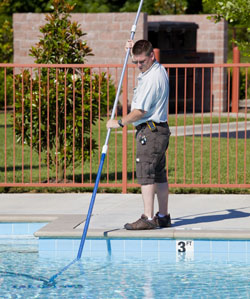
How To Dive Safely
Correct installation of a good diving board is among the top measures for pool safety. Residential pools that meet the ANSI/NSPI-5 Standard reported very few diving accidents last year. In fact, out of over a billion dives from diving boards in such pools, no serious accidents resulted. This is an enviable safety record that has lasted for years.
When people see a diving board, they will know that there is water deep enough for diving and that all diving should be done in that area. It is not safe to dive into water that is under 6 ft. in depth. When swimmers of all ages see a diving board, they will realize that it marks the safe area for diving. Having a diving board will help you keep diving in the deep water area of your pool so that it will be both enjoyable and safe.
To prevent injuries and remain safe, follow these rules:
- Restrict diving to the end rather than the sides of the diving platform.
- Be aware of how deep the water is, and take time to plan the trajectory of your dive.
- To control a shallow dive, and prevent injury, hold your hands and head up, arch your back, and when entering the water use your hands to steer.
- You should never approach a dive at a running pace.
- Never dive into water that is not of a sufficient depth.
- Avoid diving into water that is too shallow. When you perform a shallow dive, keep both head and arms upright, guiding your path by your hands.
- Check that your diving trajectory is free from any items under the surface.
- If you are at an in-ground pool, don't ever dive off the side.
- Don't use alcohol or any illicit substances when diving.
Tip: A clean, clear pool is crucial to safe diving and swimming, so start looking for pool cleaning services today.

